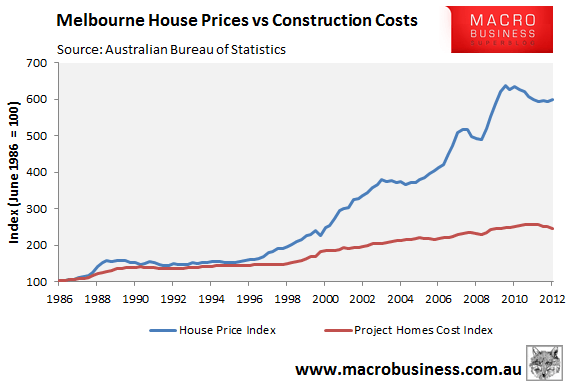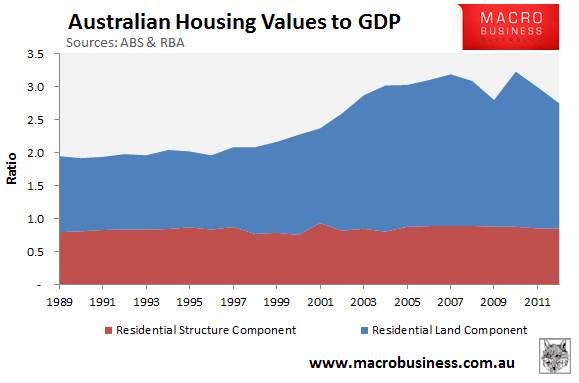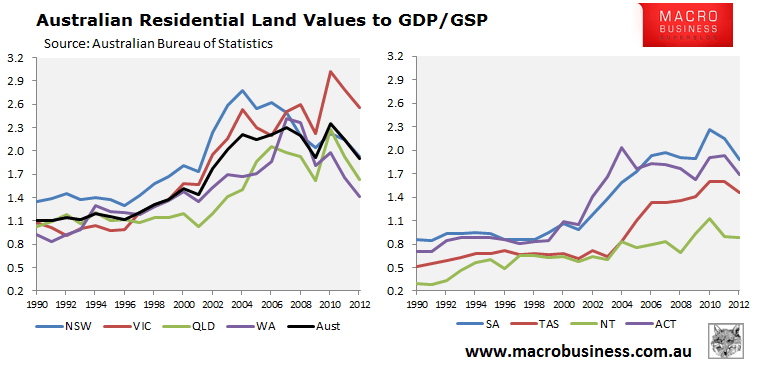
The Herald-Sun has today run an article lamenting escalating construction costs, which is causing stagnation across Melbourne’s building industry:
By most accounts, the state’s property and construction sectors are stagnating, with some analysts even declaring they are in turmoil.
Melbourne’s strong suit – being a liveable metropolis with plentiful and relatively cheap land on the fringe – is in question.
Residential rather than commercial projects have driven the construction sector in recent years, but the housing market has entered a cyclical downswing.
Despite rapid population growth, housing-estate subdivisions and new home construction have slowed markedly from 2011 with no significant recovery expected in the short term…
A report by consultancy group Charter Keck Cramer says property sector productivity is in decline.
It says that among the restraints on growth are “compliance requirements, timing and cost; constrained and tightly guarded (expensive) local capital; uncompetitive labour costs; (a) cumbersome and dis-incentivised business taxation base and lack of ‘future proofing’ infrastructure investments”.
Developers are complaining that profit margins are diminishing and that future building opportunities are being undermined by increasing development charges and high costs.
Beck Property Group director Sam Beck says construction costs are the main problem.
“The whole building industry needs its rates and its costs looked at.
“It’s getting to a point now where it’s almost too expensive to build.”
Charter Keck Cramer’s complaint about elevated construction costs follows a recent survey by Roy Morgan Research, which cited material and labour costs as key reasons for the building industry’s under performance.
While I don’t doubt that elevated construction costs are a concern for the building industry, I am surprised that they have failed to mention elevated land costs as a core reason behind the industry’s under performance. As shown by the below chart, the cost of building new project homes in Melbourne (i.e. the physical dwelling excluding land costs) has been lacklustre when compared against the growth of house prices (which includes land costs):

In fact, Melbourne house prices more or less tracked construction costs in the decade to 1996, before decoupling. The difference between these two measures post 1996 is the huge escalation of land prices, which roughly doubled against against GDP as construction costs flat-lined (see next chart).

Moreover, Victoria’s residential land prices were the highest in the nation relative to gross state product as at June 2012 (see next chart).

If developers are seeking answers to lacklustre new home sales in Melbourne and declining profit margins, perhaps they should first look at factors driving-up land prices, rather than second order issues such as high labour costs.

